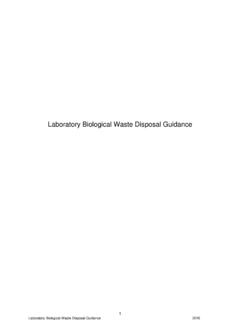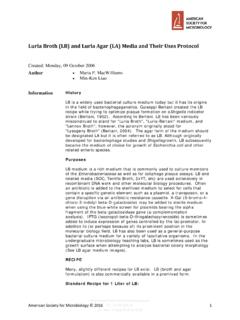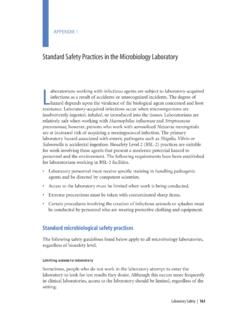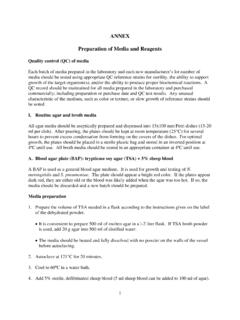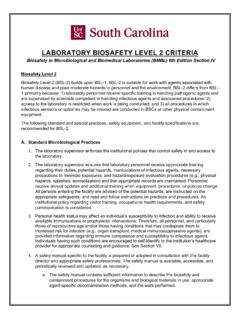Search results with tag "Autoclaving"
Laboratory Biological Waste Disposal Guidance
www.sgul.ac.ukAutoclaving All Biohazard group 3 organisms and Genetically Modified Organisms (GMO’s) at class 3 must be destroyed by autoclaving at 134oC. It is also preferable that Biohazard group 2 and GMO class 2 organisms are treated at 134oC however a validated chemical destruction method can be used.
GENERAL AUTOCLAVE SAFETY GUIDELINES
www.ehs.washington.eduIf you are autoclaving biohazardous waste, follow the Autoclaving Biohazardous Waste Guidelines. PPE Always use personal protective equipment (PPE) when using an autoclave. Wear a lab coat, heat-resistant gloves, and safety glasses. Be sure arms are covered by a lab coat and longer heat-resistant gloves to prevent burns from
Luria Broth (LB) and Luria Agar (LA) Media and Their Uses ...
asm.orgprior to autoclaving. To maximize growth, especially when a carbon source such as glucose is added, phosphate buffer or Tris-HCl buffer may be added to maintain the pH. If the medium is to be used for bacteriophage growth, a sterile stock solution of CaCl 2 is often added to a final concentration of 2.5 x10-3 M after autoclaving. Top agar (0.75 %
Requirements for Decontamination by Autoclaving
ehs.virginia.eduRevised 4-3-2012 EHS Biosafety 2 Place clear autoclave bag or other container in a SECONDARY container suitable for autoclaving. labeled with a biohazard symbol/sticker . d. a. Make sure your plastic secondary container is Not all plastics can be
Standard Safety Practices in the Microbiology Laboratory
www.who.intAutoclaving An autoclave must be available for the BSL-2/3 laboratory and must be operated only by personnel who have been properly trained in its use. To verify that each autoclave is working properly, spore strips or other biological indicators designed to test for efficiency of sterilization should be included in autoclave loads on a
ANNEX Preparation of Media and Reagents
www.cdc.govbefore autoclaving. 2. Autoclave at 121°C for 20 minutes. 3. Cool to 60ºC in a water bath. 4. Add 5% sterile, defibrinated sheep blood (5 ml sheep blood can be added to 100 ml of agar). 2 • If a different volume of basal medium is prepared, the amount of blood added must be
Standard Operating Procedure (SOP) for Autoclave Operation
www.uwyo.eduAutoclaving is a process used to destroy microorganisms and decontaminate biohazardous waste and microbiological equipment used at Biosafety 1, 2, and 3 at the University of Wyoming. II. Risk Management A. Potential Risks Autoclaves use high pressure and high temperature steam for sterilization. The potential safety risks for operators include:
Pulse Oximeter instructiOn manual
images-na.ssl-images-amazon.comMay 20, 2011 · Inaccurate measurements may be caused by autoclaving, ethylene oxide sterilizing, or immersing the sensors in liquid may cause inaccurate readings. Significant levels of dysfunctional hemoglobin (such as carbonyl-hemoglobin or methemoglobin) may cause inaccurate readings.
LABORATORY BIOSAFETY LEVEL 2 CRITERIA
sc.eduprocessing area for decontamination, preferably by autoclaving. d. Broken glassware is not handled directly. Instead, it is removed using a brush and dustpan, tongs, or forceps. 13. Perform all procedures to minimize the creation of splashes and/or aerosols. 14.
AUTOCLAvED AERATED CONCRETE MASONRy UNITS
imiweb.orgOct 01, 2015 · AAC autoclaving yields a product that has a very low linear shrinkage of 0.020%. It is recommended that a breathable coating be applied on AAC wall surfaces to facilitate moisture dissipation. It is not recommended that non-breathable coatings be applied to both sides of …
AUTOCLAVING BIOHAZARDOUS WASTE GUIDELINES
www.ehs.washington.eduBiohazardous Waste Guidelines, and implement a site-specific procedure for autoclaving biohazardous waste. A template SOP is available. REGULATIONS: Steam sterilization of biohazardous waste with an autoclave must be done in accordance with Seattle-King County regulations as specified in Seattle Municipal Code, Section 21.43.050 and King
Similar queries
Laboratory Biological Waste Disposal Guidance, Autoclaving, Guidelines, Autoclaving biohazardous waste, AUTOCLAVING BIOHAZARDOUS WASTE GUIDELINES, Luria Broth (LB) and Luria Agar (LA) Media and Their, Requirements for Decontamination by Autoclaving, ANNEX Preparation of Media and Reagents, Biohazardous waste, AUTOCLAvED AERATED CONCRETE MASONRy UNITS, Sterilization
